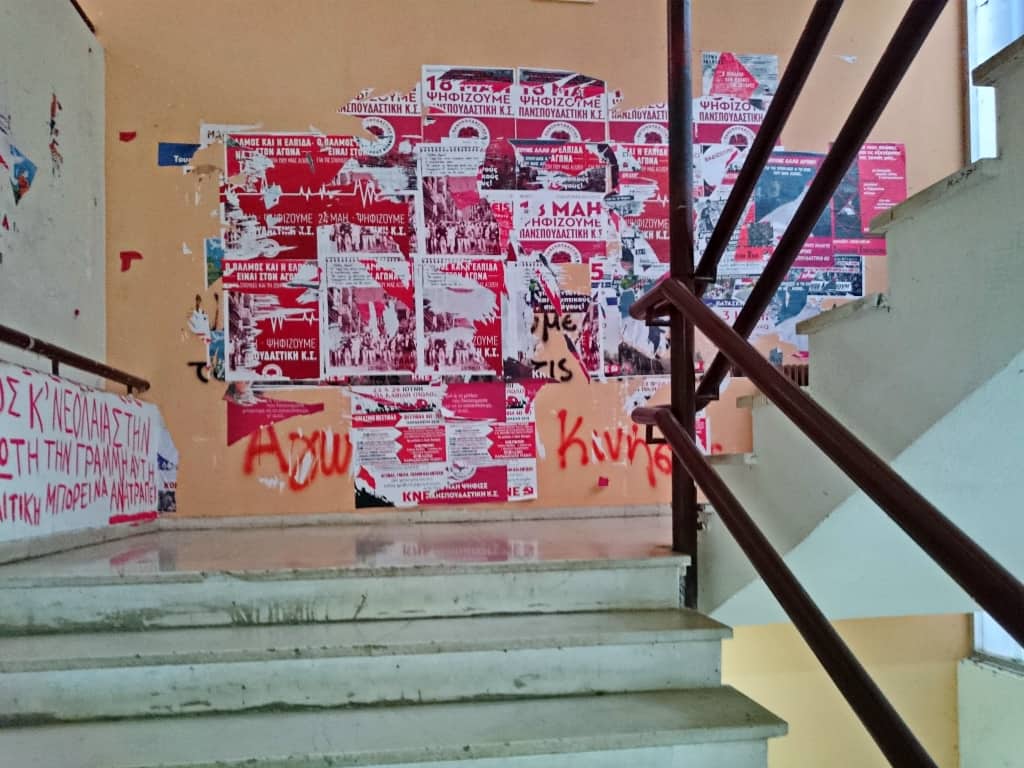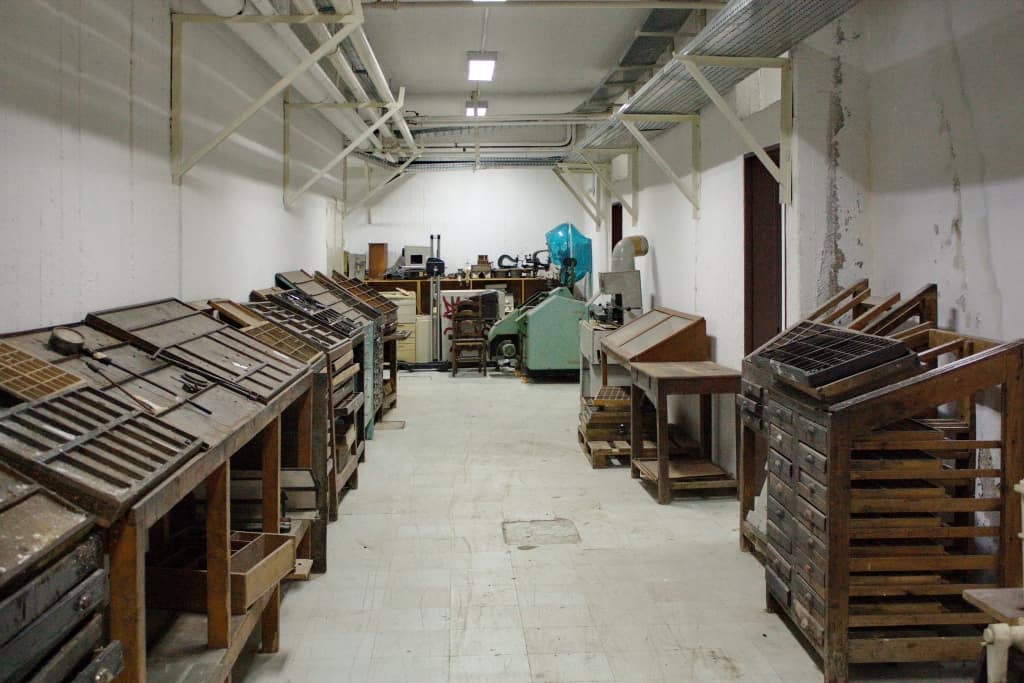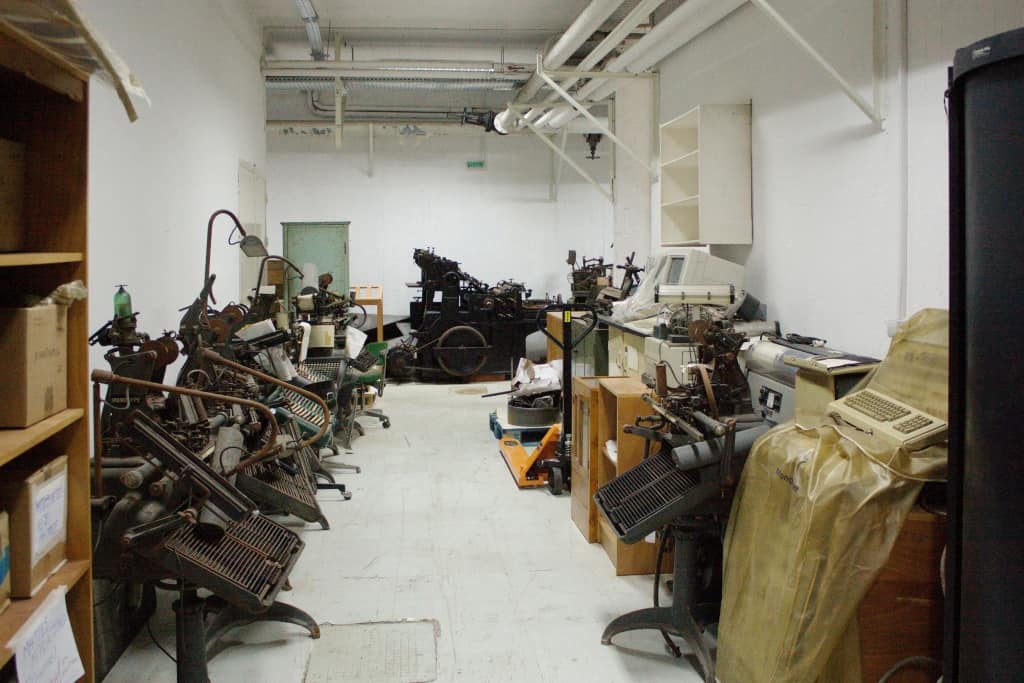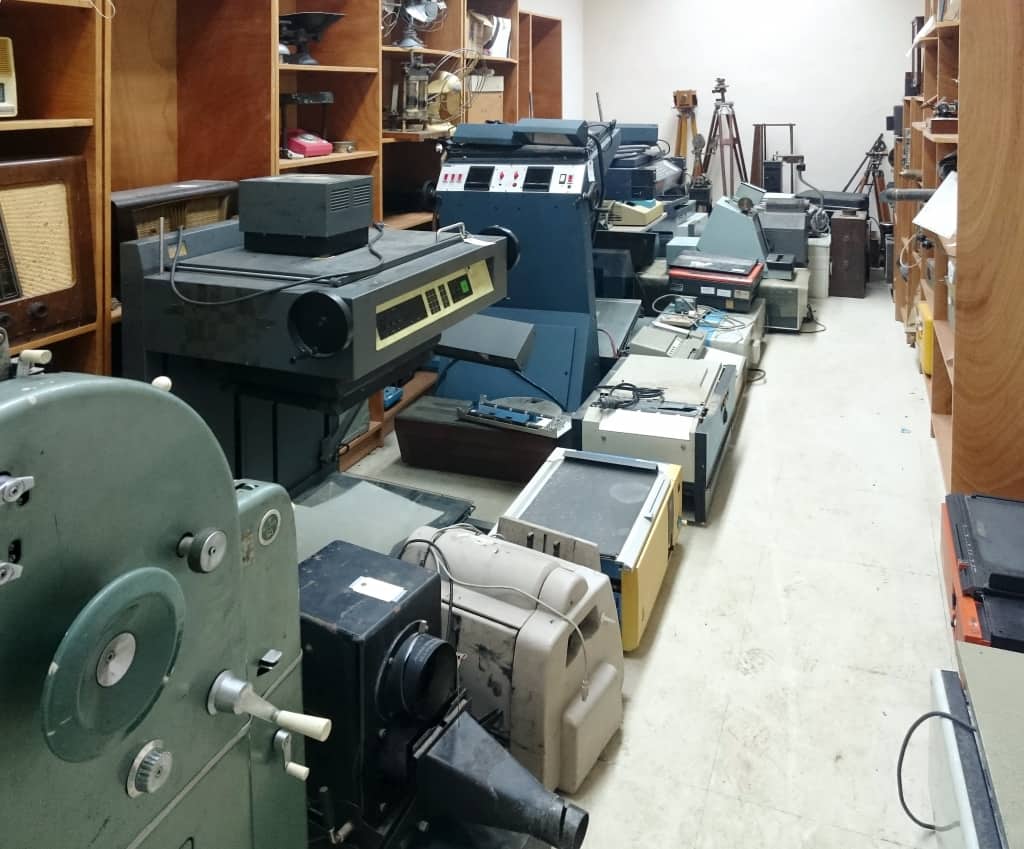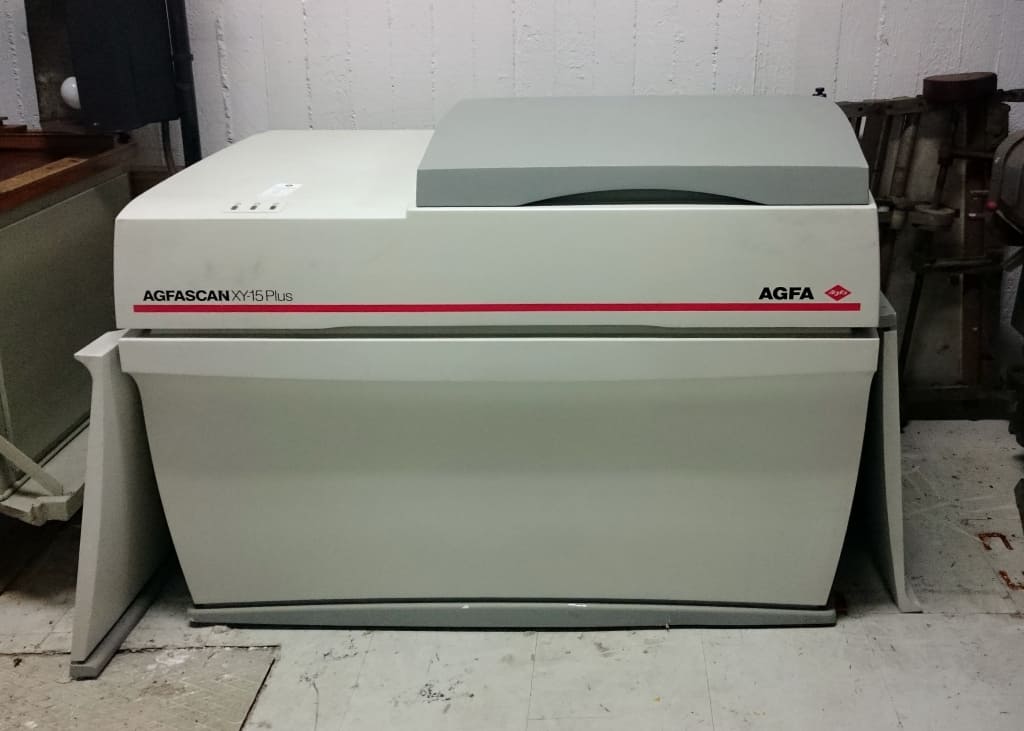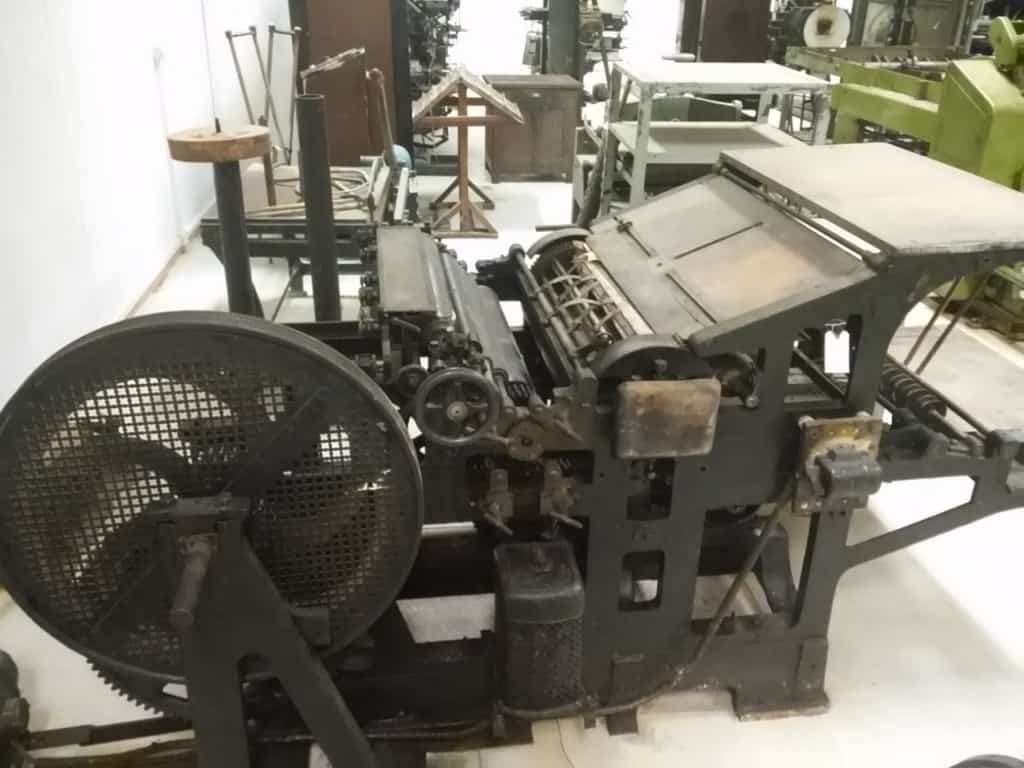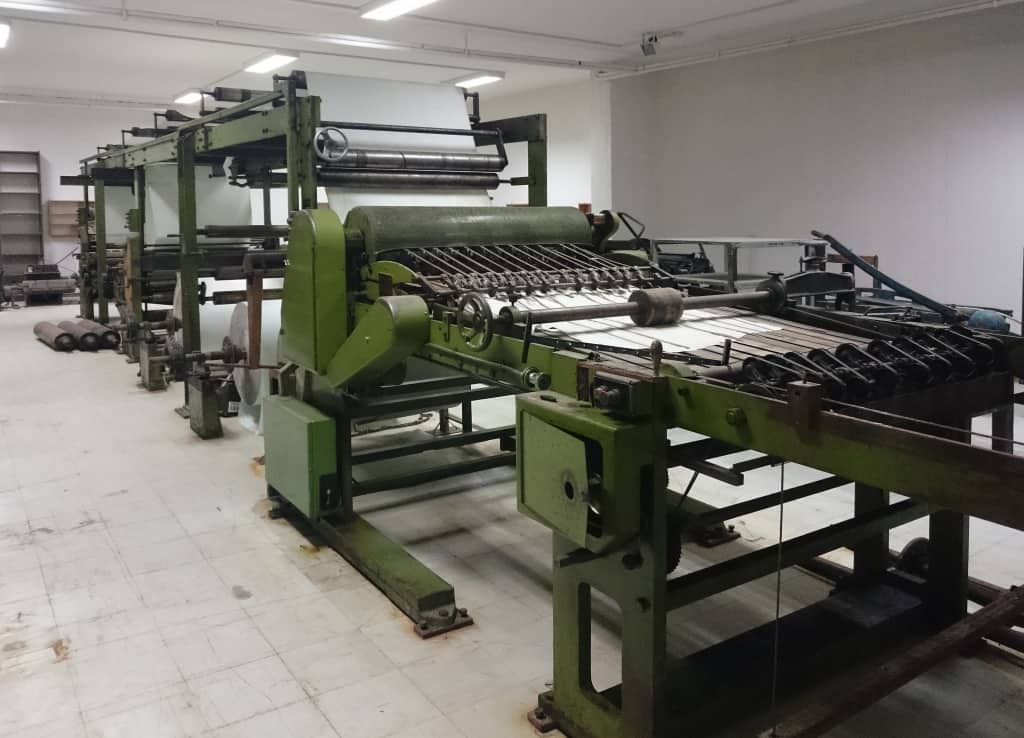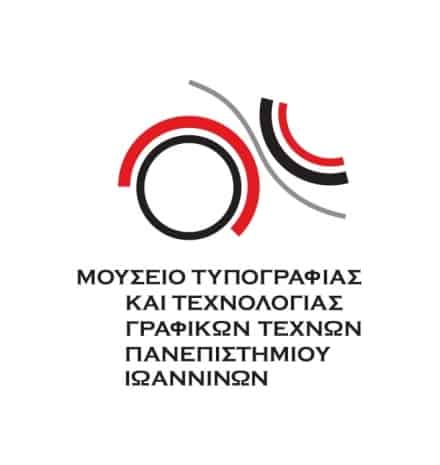[Ioannina, Greece]
A printing museum in the making at the University of Ioannina
Account of a visit to the collections of the University of Ioannina’s Museum of Typography and Graphic Arts Technology, by Alan Marshall.[1]
See also the Museum of Typography photo album in the AEPM Flickr gallery.
Ioannina is a small city with a population of about 110,000 situated in the West of the Greek mainland. As well as being the commercial centre of the region, it has a University with over 25,000 students – and a printing museum.
In the seventeenth and eighteenth centuries, during the period of Ottoman rule, and before Greece had it’s own indigenous printing trade, Ioannina was an important centre for the importation and distribution of books in the Greek language produced by local merchants who had set up printing establishments in Venice. Despite the persistent wariness of the Ottoman authorities of the time, expatriate booksellers such as Nikolaos Glykys and Nikolaos Sarros (late seventeenth century) and Dimitrios Theodosiou (mid-eighteenth) produced over 1,600 editions to be distributed in Greece. So it is perhaps not altogether surprising to find a printing museum in the city of Ioannina – though it might be more accurate to say that it is a printing museum in the making, for at the moment it can only be visited by appointment. That said, however, it should be emphasized that it is really not difficult to make an appointment. (See below for contact details.)
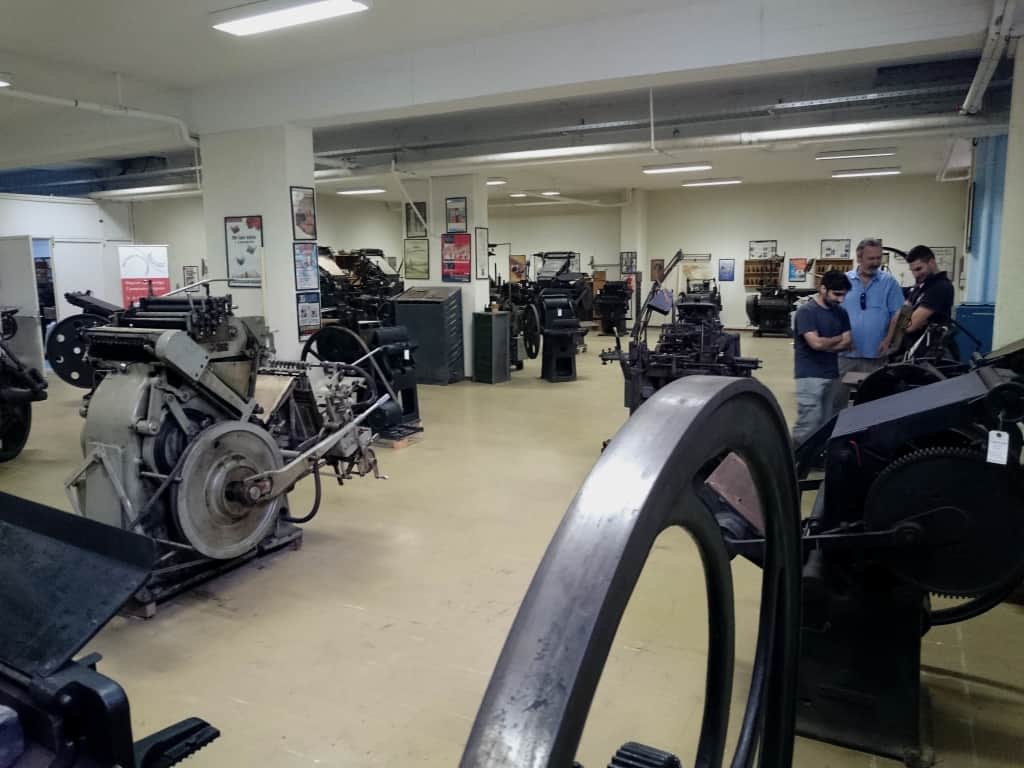
I had the pleasure of visiting the Museum with George Matthiopoulos, who usually teaches graphic design and typography at the faculty of Graphic Design and Visual Communication of the University of West Attica in Athens, but who is currently working with the Museum of Typography for a two-year period on the University’s project to make the Museum more accessible to the public. (The University has four other museums, all of which are closely tied to teaching programmes.) George can be seen in the photo with two volunteer students who are working on the restoration of various machines. We were also accompanied by Eleni Katsouri who is in charge of cataloging the collection.
The origins of the University of Ioannina’s Museum of Typography and Graphic Arts Technology go back to the early 1990s when Georgios Ploumidis, professor of modern history, began to collect the traditional – and sometimes not so traditional – machines and tools which were fast disappearing from Greek printing offices under the onslaught of digital technologies. One of the originalities of the approach adopted by George Ploumidis and his collaborators was to extend their remit to cover not only printing machines, but also the many other techniques involved in the transmission of the written word. Nearly thirty years, and many donations and acquisitions later, the collection now occupies a couple of thousand square meters in the bowels of the department of history and archaeology and includes not only the metal type, composing machines and letterpress and lithographic presses which one would expect to find, but also a wealth of other less commonly collected equipment such as phototypesetting machines, process cameras, scanners, typewriters, office duplicating machines, word processors and early desktop computers. Indeed the wealth and variety of the collection is such that an enumeration of its contents would be unduly fastidious. So perhaps a few images – which as we all know can often speak louder than words – will help to give an idea of the collections which lie at the heart of the museum of printing of the University of Ioannina.
The entrance to the Museum is inauspicious, for it is located in a modern concrete university building, the walls of which have been liberally decorated by political graffiti and posters for the usual range of student activities. So it is all the more surprising to find oneself in a large, if rudimentary, exhibition space containing a representative selection of perhaps fifty or more machines of all sorts: linotypes, letterpress machines various formats, stone and offset litho presses, rolling presses, typewriters, and ruling machines. The layout is simple and for the moment is intended to give visitors an overview of the different techniques represented in the Museum’s collection, as seen through a selection of machines that have been cleaned and restored. It should be emphasised that this impressive array of machines is but a small part of the collection. But more of that later…
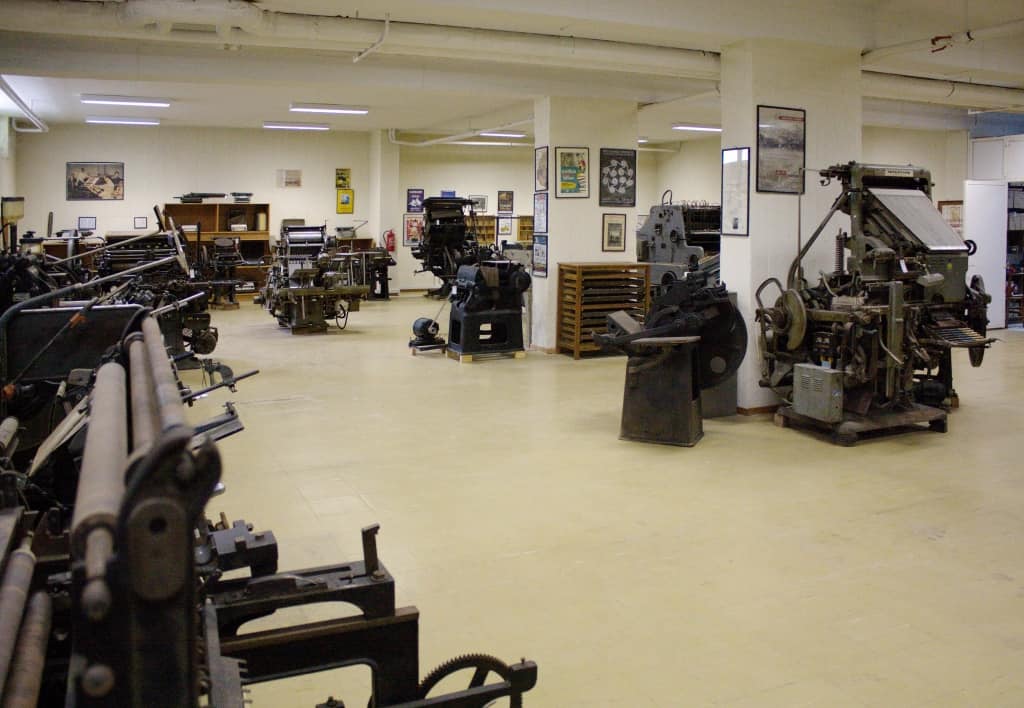
Work in progress: view of about a quarter of one of the Museum of Typography’s two large exhibition spaces.
The first thing that strikes the visitor is the absence of objects from the handpress period. Which is of course quite normal because we are in a Greek printing museum and printing only began to be practised in Greece at the beginning of the industrial period. The second is the absence of metal hand presses. Which is odd considering the amount of effort which has gone into buiding up the collection over the years. Had they all disappeared by the 1990s? It would be interesting to know more about the fate of such presses which must have been in current use until well into the twentieth century. Were they requisitioned, melted down and the metal used for military purposes during the Second World War and the Civil War which followed?
The first exhibition space is followed by a second, equally large, given over partly to the display of machines and partly to the organisation of practical workshops for students, school groups and occasional events. Of particular interest among the machines is a complete early twentieth century wooden process camera, used to photograph copy for photoengraving, and a Fairchild Scan-a-Graver, two among many items in the Museum’s collection which relate to photoengraving and prepress operations which, it goes without saying, are seriously under-represented in most printing museums’ collections.
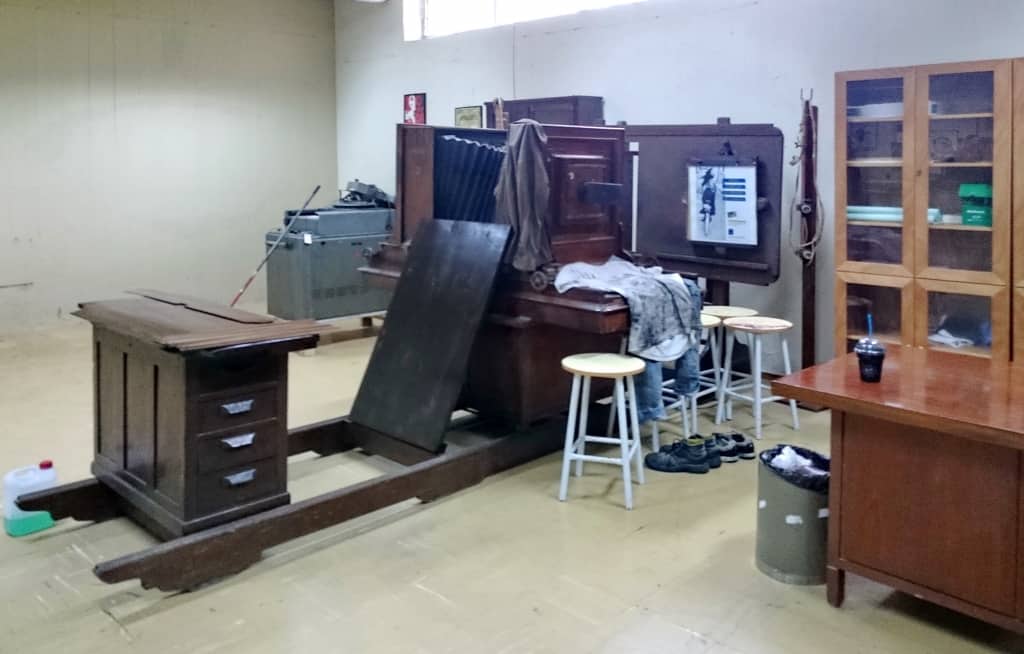
An early twentieth century process camera waiting to be fully assembled for display. Behind it can be seen a Fairchild Scan-a-Graver, one of the first electronic photoengraving machines (1949). At the end of the 1940s, photoengraving techniques began to benefit from technical spin-off from the Second World War. The Scan-a-Graver engraved plastic relief plates from data obtained by optical scanning of the original document.
After the first two spacious exhibition and workshop spaces, the visit continued as we plunged into a labyrinthine series of rooms and corridors in which an extraordinary amount of printing equipment is stored cheek-to-jowl in order to take best advantage of the space which, though considerable by most standards, doesn’t quite seem to be big enough. Most – though not all – of the items have been identified, if only summarily, and so are accessible for study, cleaning or restoration.
The organisation of the reserve collection follows sequence of print production, beginning with the typesetting materials, first of all type and composing room equipment for hand composition…
…then Monotype (most of the Linotypes are already on display)…
… and a rather fine collection of matrices for Monotype’s Monophoto phototypesetting machine (1950).
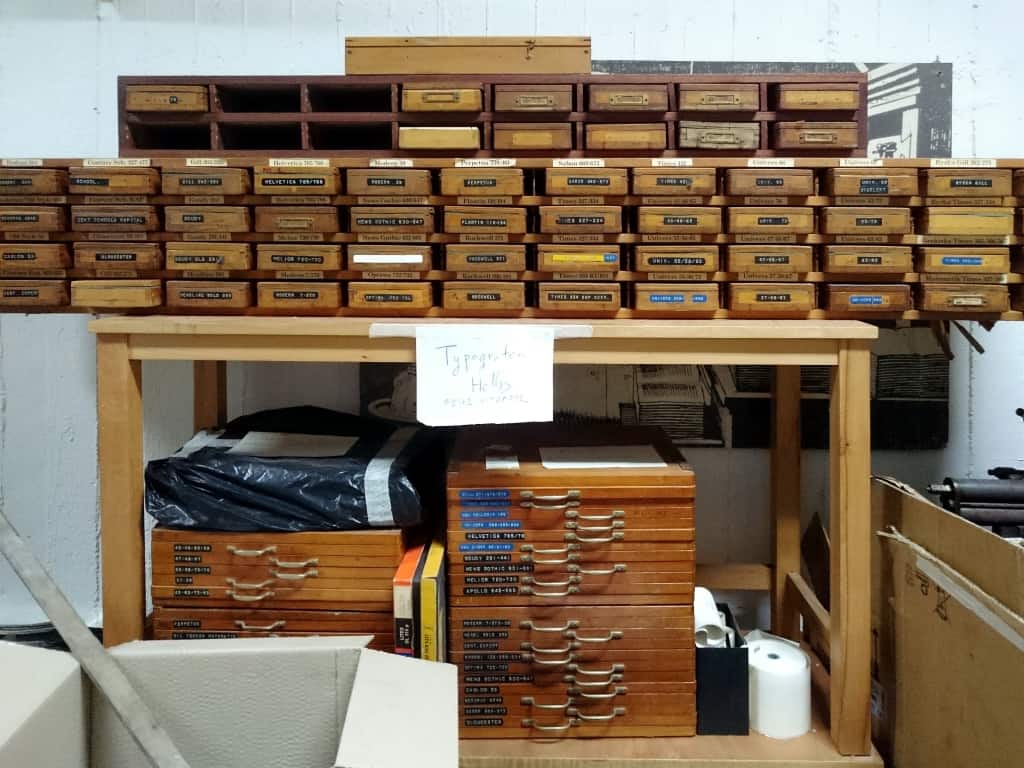
Photomatrices for the Monophoto phototypesetter, Monotype’s landmark, but short-lived first foray into phototypesetting. The Monophoto was essentially a traditional Monotype caster in which the matrix/moulds were replaced by plastic photomatrices, and the metal injection unit by a photographic device. The machine remained in small-scale production until the early 1970s, but as one commentator remarked at the time, the use of a ton and a half of high precision mechanics to deviate a light beam was a a case of serious over-engineering!
The Museum of Typography also has an extensive collection of photoengraving equipment, both silver-based and digital, including early large-format horizontal process cameras, more recent vertical cameras, and a flatbed digital graphic arts scanner.
The reserve collection of printing presses includes many early twentieth letterpress and offset machines, as well as a press which came from the Turkish-language newspaper Yanya (Ioannina in Turkish) which, after the liberation of the town in 1913, became the local Greek newspaper Patris (Patriot).
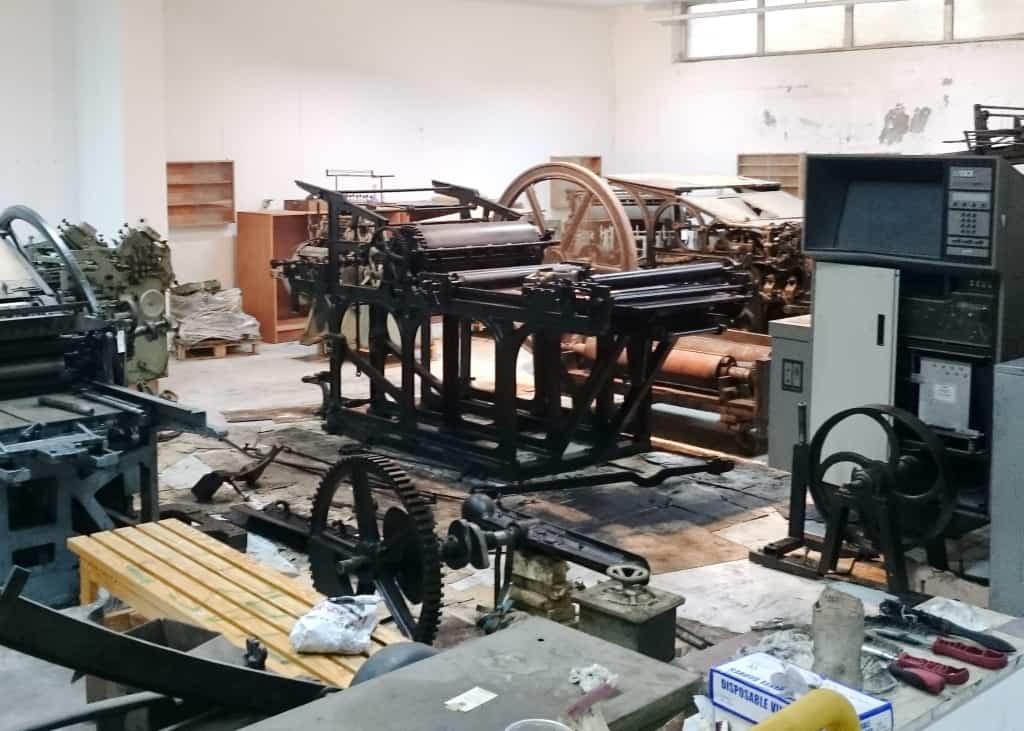
This section of the reserve may look rather untidy, but it is only because the nineteenth-century press from the Yanya/Patris newspaper in Ioannina has been partially dismantled for restoration work amid the eight or ten large format presses which this 60-odd square metre storage area houses.
The Museum is also very proud to have a flatbed press dating from the late nineteenth century which is of particular importance because it came from the Gazzetta Jonica newspaper on the island of Corfu, the cradle of indigenous Greek printing.
Large web-fed rortary presses are notoriously rare in printing museums’ collections. This one is of fairly recent construction, but has the additional interest of having come from the National Printing Office in Athens (which I am told has recently opened a small printing museum of its own on its premises).
The Museum of Typography’s collections contain many less ‘conventional’ items, many of them from the world of reprographics, a sector of graphic production which always been looked down upon by ‘real’ printers – i.e. those within the traditional printing trade. In the first half of the twentieth century, few printers imagined that office document production would ever be a threat to printing. Typewriters and office duplicators belonged to another world and seemed irrelevant to the serious business of mass reproduction of words and images. But the twentieth century was to prove them wrong. As the techniques of office document production slowly but surely became more sophisticated, so the demand for short runs of printed documents became ever-more widespread. The adoption by offices of small offset presses such as Rotaprints and Addressograph-Multigraphs and justifying typewriters like the Varityper, allowed them to improve the quality of certains types of office documents and opened the way for the emergence of a new sector of graphic production – reprographics – which by the 1970s had become a significant market for equipment manufacturers. For the printing trade, however, reprographics remained beyond their remit. It was considered to be low-grade officework done by semi- or unskilled workers, most of whom were, to make matters worse, women! As it happened, the reprographics and printing sectors would in due course both be overtaken by a largely unforeseen delopment: that of desktop publishing, digital prepress and the systematic exploitation of data bases as a source of structured documents destined to be printed. By the late 1980s, it had become impossible to define the frontiers between printing, office document and data processing.
Many of the less conventional, but vitally important techniques of office document production and data processing have simply disappeared without trace: scrapped in the rough and tumble of rapidly accelerating technological change and the ‘creative destruction’ so dear to Schumpeterian economists (i.e. as short-lived techniques have been replaced and as firms have gone bust). Some have survived, either in private collections of office equipment (a surprising lively domain), or in museums of computing which are still struggling with the immense museographic problems which data processing, mechanographics and digital technologies raise. Most such techniques are virtually absent from printing museums’ collections. Some, however, have survived in the collection of the Ioannina printing museum.
To give but a few random examples…
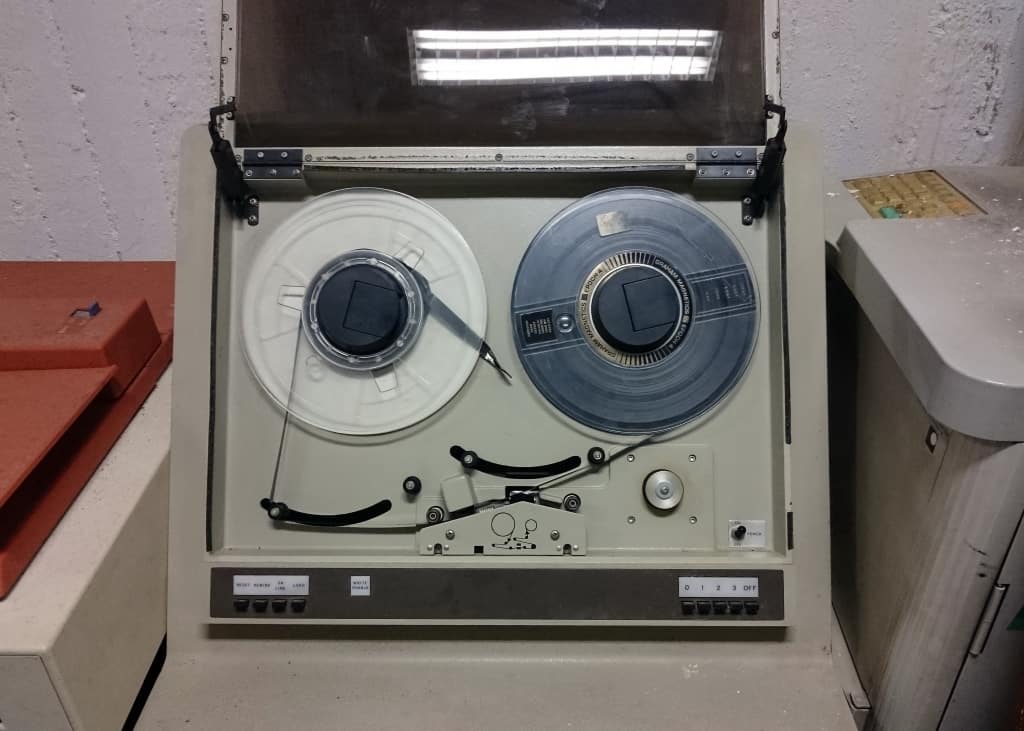
This Hewlett Packard tape reader is of the type which was widely used as part of a computer typesetting systems. Mainframe and, especially, mini-computers became a essential component of high-volume typesetting in the 1960s. Large businesses and administrations used the same computer systems for which composing machines – hot-metal and increasingly photo – had become high-quality ‘output devices’.
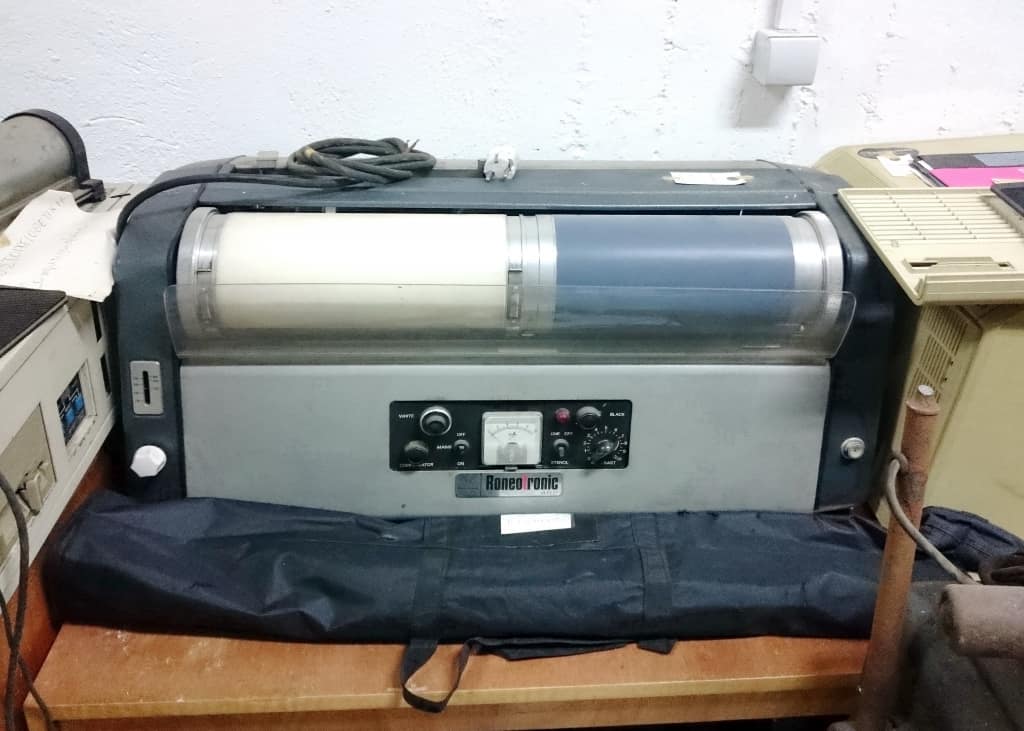
By the 1970s, reprographics departments had come a long way from cutting duplicator stencils manually or on a simple typewriter with the ribbon removed. Devices like the Roneotronic stencil cutter facilitated the production of higher quality stencils which could include both texts and images.
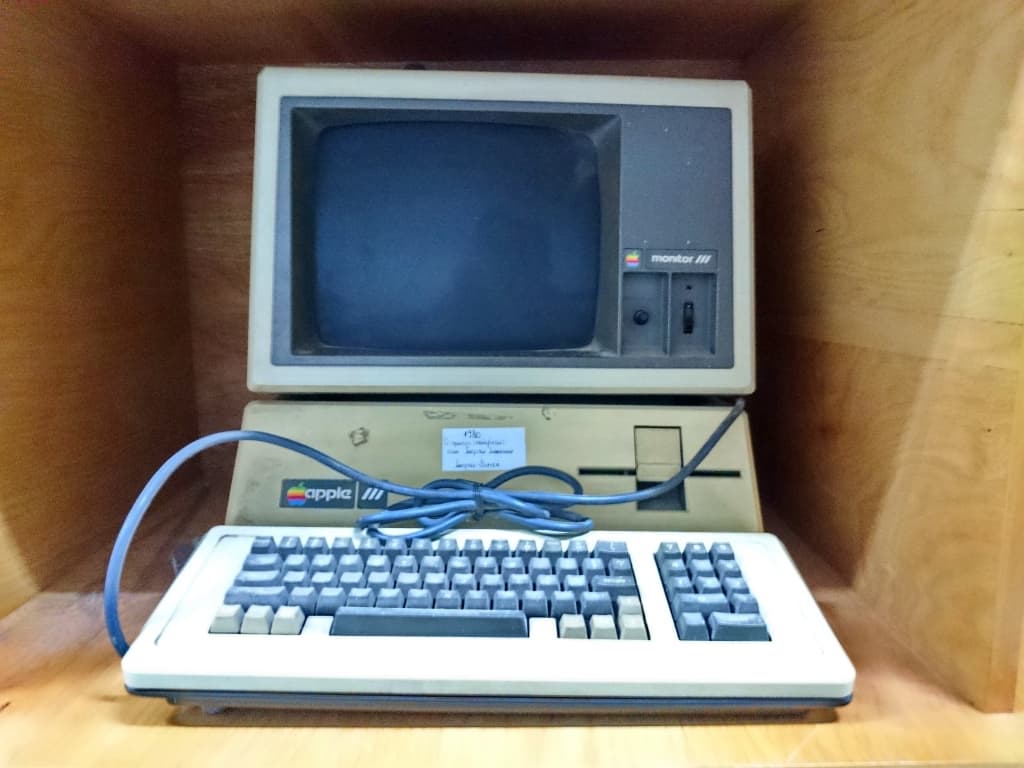
Sometimes technological failures are as instructive as successes. The Apple III seen here was intended to be the successor to the highly successful Apple II. However problems of stability of the system plagued the new machine for its short life (launched and recalled 1980, relaunched 1981, withdrawn 1985) and it was considered to be a commercial failure (although later Apple II models quietly incorporated many of its hard- and software features). Apple co-founder Steve Wozniac reckoned it failed because it was designed by the firm’s marketing department. Rather appropriately its operating system was called Apple SOS!
In building up the future Museum of Typography’s collection, professor Ploumadis and his successors have had the foresight to extend its scope to include techniques which were at the time considered to be unrelated to printing. If only because many such one-time everyday objects, precisely because they were extremely common (often ephemerally) and so hardly worthy of consideration. Some, pioneering desktop computers – such as the Apple Lisa – have even become extremely expensive to acquire, already beyond the budget of most printing museums. More important, however, such machines and systems – which may at first sight seem banal, quirky, or even irrelevant to printing history – will be extremely useful for the future development of the Ioannina museum, when the time comes to explain the profound changes which have taken place in modes of production and distribution of texts and images over the last half century; when the time comes to explain how printing, data processing and office document production came together in the late twentieth century as part of the nascent digital media. A problematic which is, for the moment, largely absent from most European printing museums’ permanent exhibitions.
Contacts
Web: mtt.unit.uoi.gr
Email: typmusem@cc.uoi.gr
Stamatis Mersinias, assistant professor:
tel. 0030 26510 05181
smersin@cc.uoi.gr
Nikolaos Anastasopoulos, assistant professor
tel. 0030 26510 05154
nanastas@cc.uoi.gr
[1] Alan Marshall, former director of the Musée de l’imprimerie et de la communication graphique in Lyon is currently chair of the AEPM.
